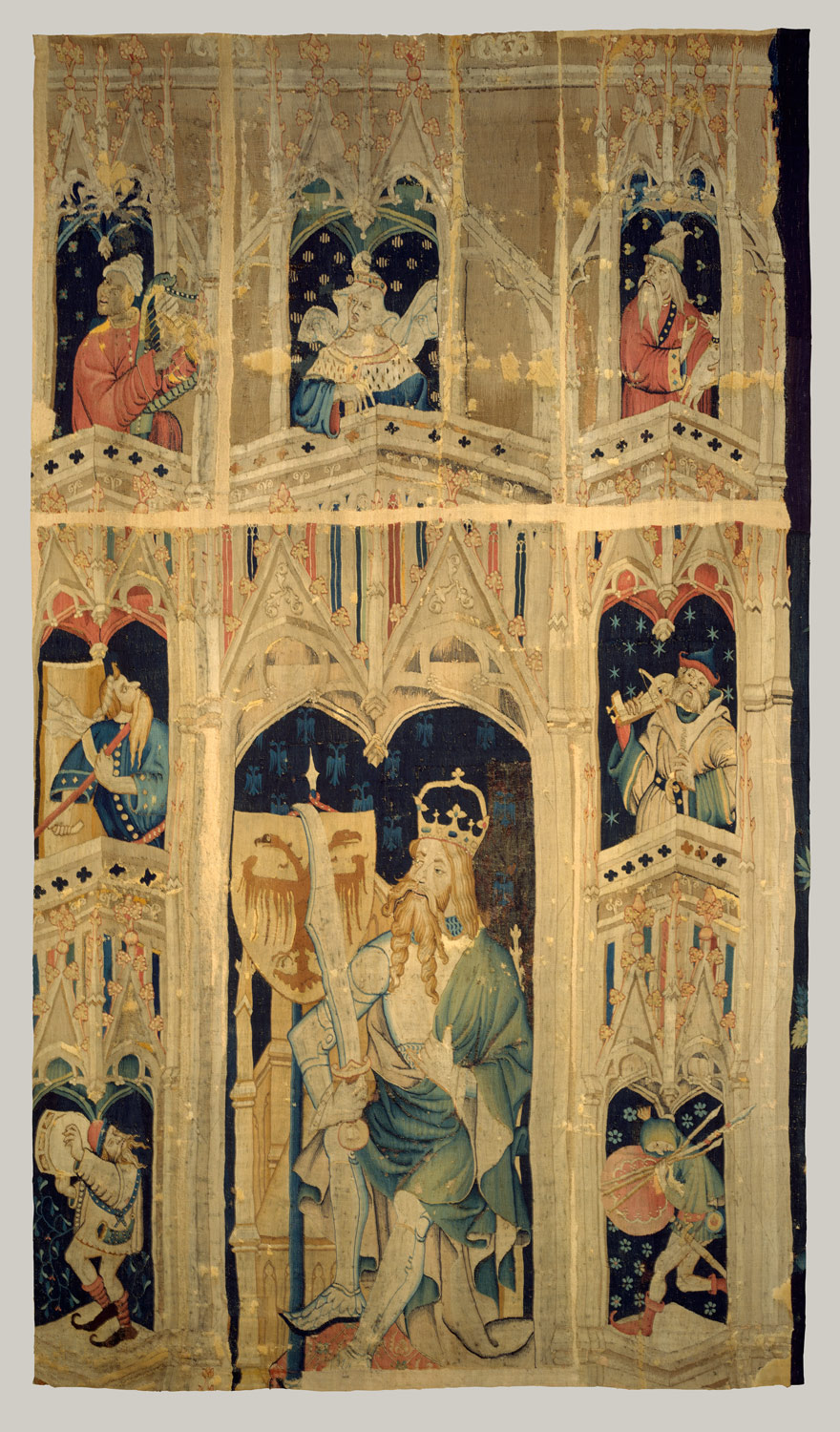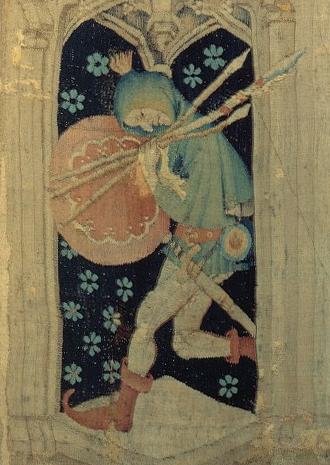Upon entering the Nine Heroes
Tapestry Room at the Cloisters, one immediately notices its positioning
within the museum. To the north of the room are two chapels: both
in Gothic style, one in an earlier style than the other. This
is a symbolic link to the six religious heroes represented in
the tapestries -three Hebrew, three Christian. To the Heroes Tapestry
are the famed Unicorn tapestries, highlighting the three pagan
heroes.
The Nine Heroes Tapestries,
representing the Hebrew heroes: Joshua, David, Judas Maccabeus,
the Christian heroes: Charlemagne, Arthur, and Godfrey of Boullion,
and the pagan heroes: Hector, Alexander the Great, and Julius
Caesar, are thought to be made around 1385 by Nicolas Bataille.
It is not positive that Bataille is the artist; however, another
set of tapestries, the Apocalypse Tapestries in Angers, France,
made by Bataille shares the same characteristics as the Nine Heroes.
The inspiration for the Nine
Heroes Tapestries came from a poem written by Jacques de Longuyon
in 1310. The poem's protagonist, Porus, is described as being
more courageous than the nine great heroes of history. Eventually,
the representation of these men soon appeared everywhere as the
poem's story grew in popularity.
One
contrary image stands out in the tapestries. No matter what era
the hero represents, he is dressed in clothing reminiscent of
the fourteenth century. This was a common artistic style used
during the time that the tapestries were created.
Although the original owner
of the tapestries is unknown, there are clues to his identity
in the tapestries themselves. Ten of the fourteen banners flying
from the turrets in the Hebrew Heroes tapestry display the golden
fleur-de-lis of France on an azure ground within a red indentured
border. Since this is the coat of arms of Jean, Duke of Berry,
third son of King John II of France, it is assumed that these
tapestries once belonged to him.



